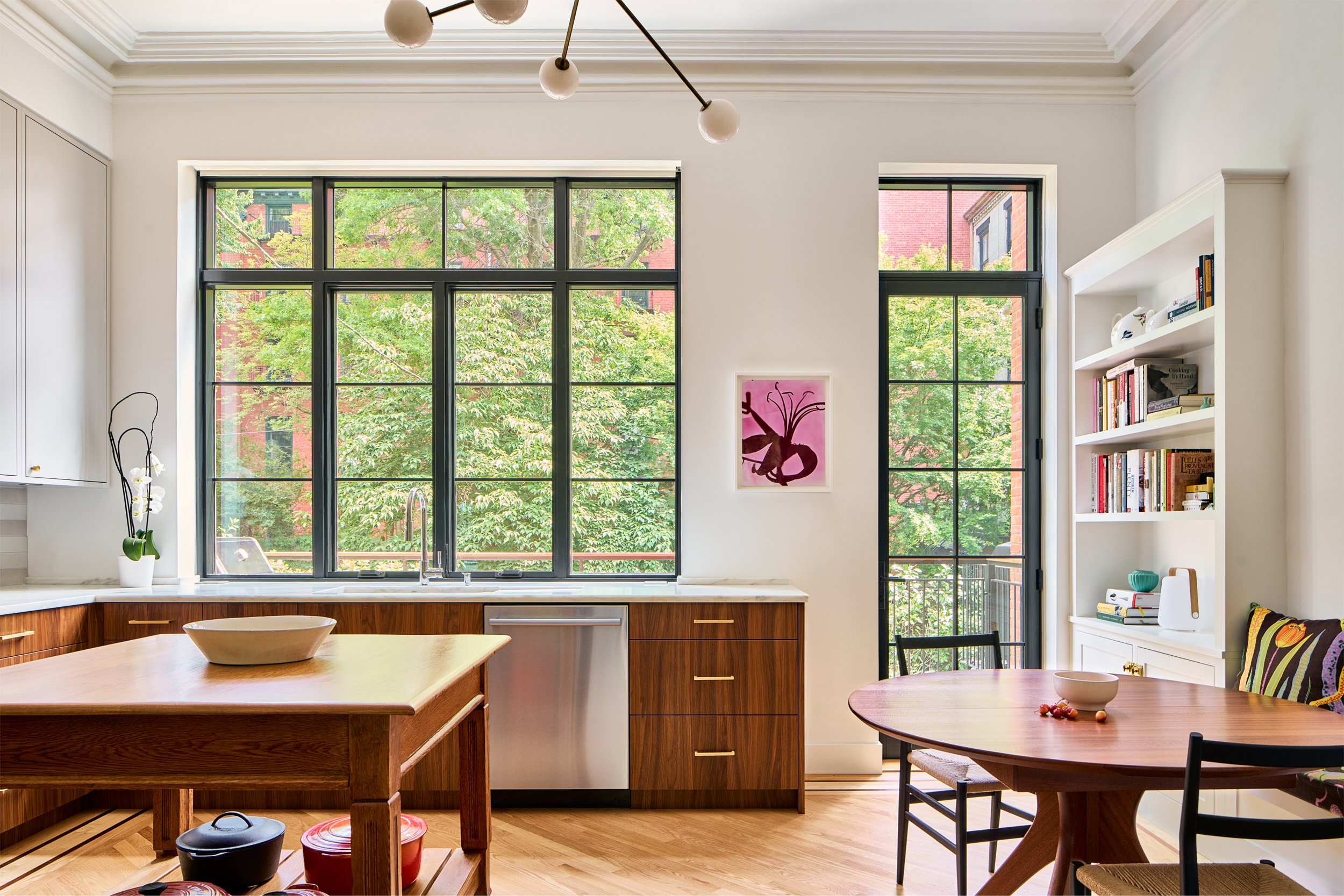Flushing's Kingsland Homestead Hosts the Queens Historical Society
The Kingsland Homestead has been located in three sites since its construction around 1790. In the 1920s it was moved from its original site on Northern Boulevard and 158th Street to make way for the proposed Flushing subway; until 1968 it was located at the corner of Roosevelt Avenue and 155th Street, where it was…


The Kingsland Homestead has been located in three sites since its construction around 1790. In the 1920s it was moved from its original site on Northern Boulevard and 158th Street to make way for the proposed Flushing subway; until 1968 it was located at the corner of Roosevelt Avenue and 155th Street, where it was beginning to become rundown. The Queens Historical Society moved it to its present location in Bowne Park, and the Society is housed in the homestead now.
Quaker Joseph Doughty constructed this building around 1785 to 1790. It is named for his son-in-law, sea captain Joseph King, who bought it in 1802. It was later occupied by the Murray family, who gave their name to Murray Hill and Murray Street in East Flushing, well into the 20th century. The interior of the homestead has been preserved pretty much as it was in the 19th century, and a public exhibit by the Queens Historical Society occupies much of the first floor that includes a representation of the Flushing Remonstrance. Kingsland is open from 2:30 – 4:30 pm, Tuesday, Saturday and Sunday, but you are advised to call ahead for an appointment at (718) 939-0647.
According to Ghosts of New York City chronicler Therese Lanigan-Schmidt, the presence of restless spirits has been noted in the old house over the past couple of centuries, but that’s old hat for Flushing: spooks apparently have troubled the Friends Meetinghouse and the John Bowne house as well!
In 1847 horticulturalist Samuel Bowne Parsons obtained a weeping beech seedling in Belgium and planted it on the grounds of the Parsons plant nursery, which occupied the property where the museum now stands. The tree grew so large that its branches touched the ground and re-rooted, producing a ring of offspring trees surrounding it. Other weeping beeches were produced from cuttings, and the species can now be found in Eastern Queens with some frequency. The original planting, the first weeping beech tree in America, died in 1998, but its survivors carry on.

In March 2013, I was surprised to see this object by the museum’s front entrance on 137th Street. It is the 5th mile marker of what is now Northern Boulevard.
Northern Boulevard was built in 1859, and opened to traffic in 1860, between what is now Vernon Boulevard and the Flushing River by the Hunter’s Point, Newtown and Flushing Turnpike Company. It connected to roads further east past the Flushing River, but the newly built stretch was named Jackson Avenue for the turnpike company’s construction supervisor, John C. Jackson. By 1920, most of the road had been renamed Northern Boulevard, with the westernmost section between Vernon Boulevard and Queens Plaza retaining the old name.
Jackson continued the colonial practice of placing milestones along his new route. Each marker showed the distance between the 34th Street Ferry at the East River, and also the distance to the bridge crossing the Flushing River.
By 1916, only three Jackson Avenue mile markers still stood: the 5 mile marker to the 34th Street ferry, at Grinnell Avenue (100th Street); the 3 mile marker near 51st Street (Old Bowery Bay Road); and the 2 mile marker near Steinway Street.
The 5 mile marker survived in place, amazingly, until 1987 when it was removed to the Langston Hughes Queens Library branch in Corona. Now, it is here at the Kingsland Homestead.
Kevin Walsh’s website is Forgotten New York. His book, with the same name, is also available.





What's Your Take? Leave a Comment